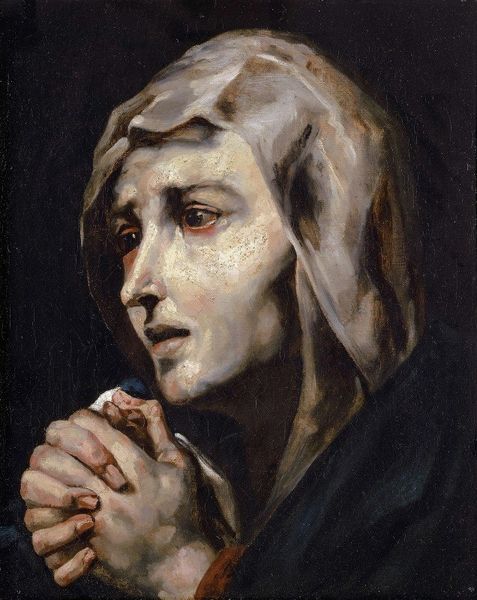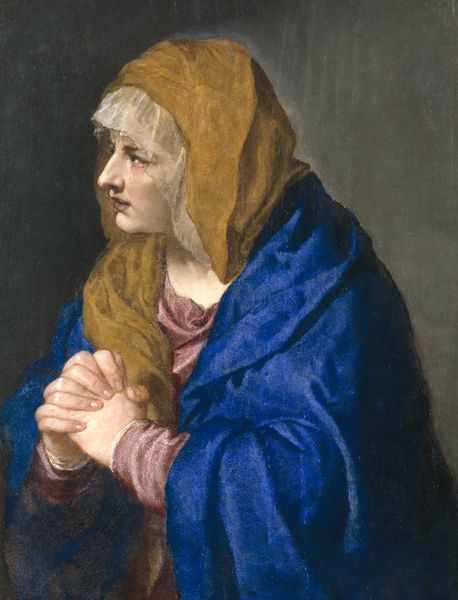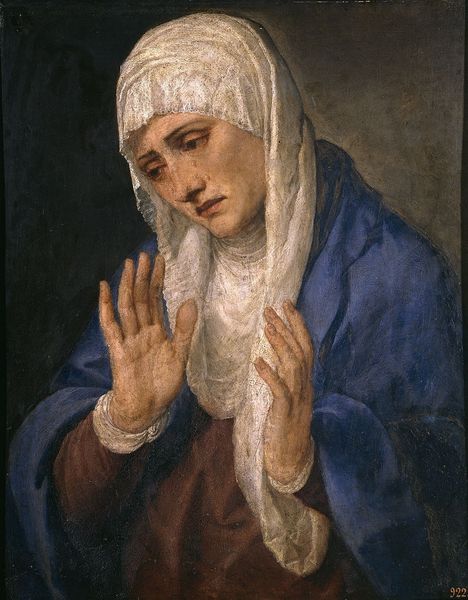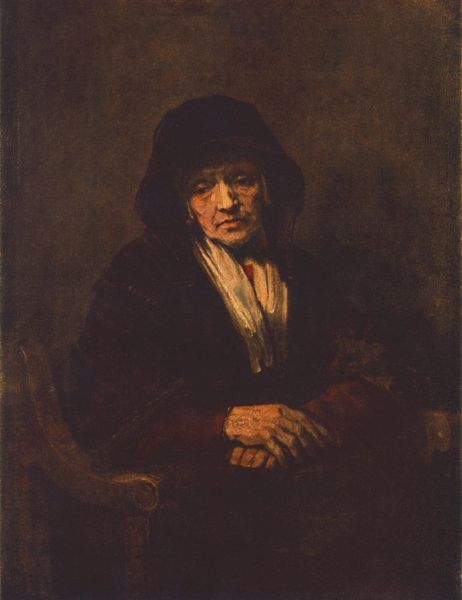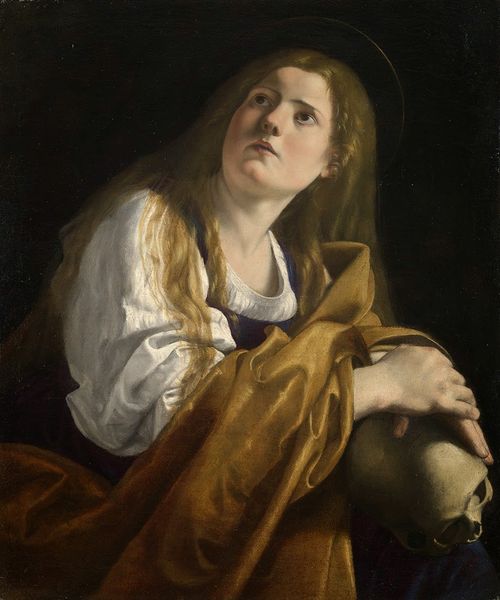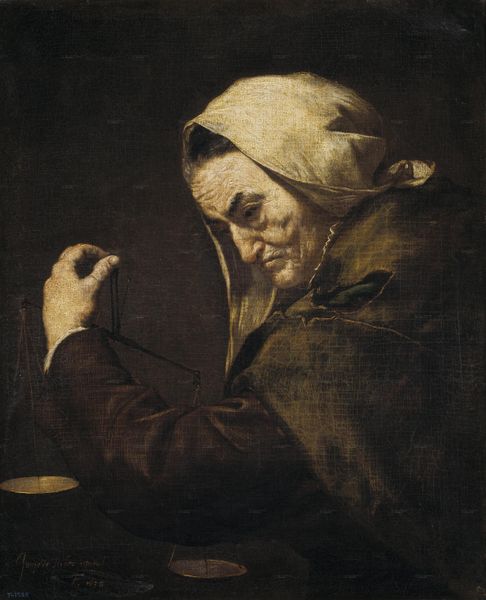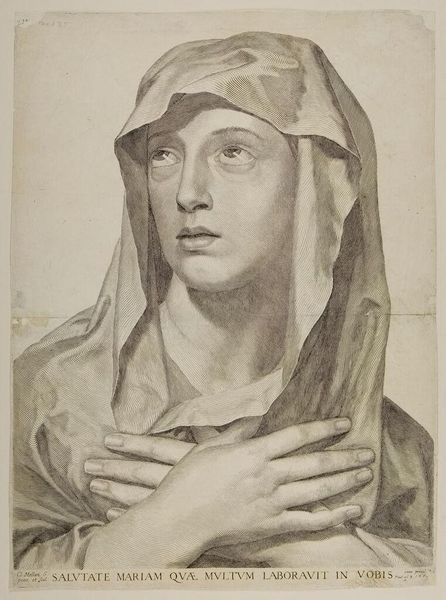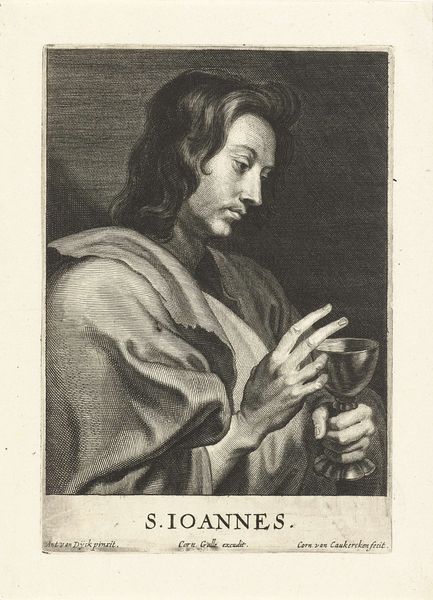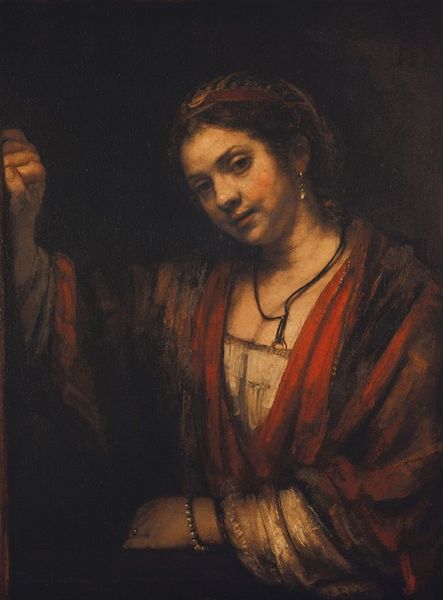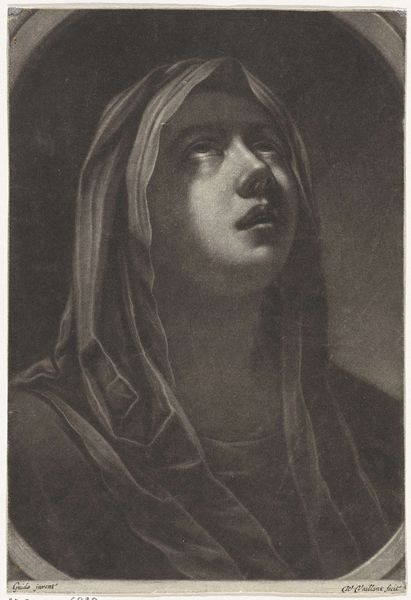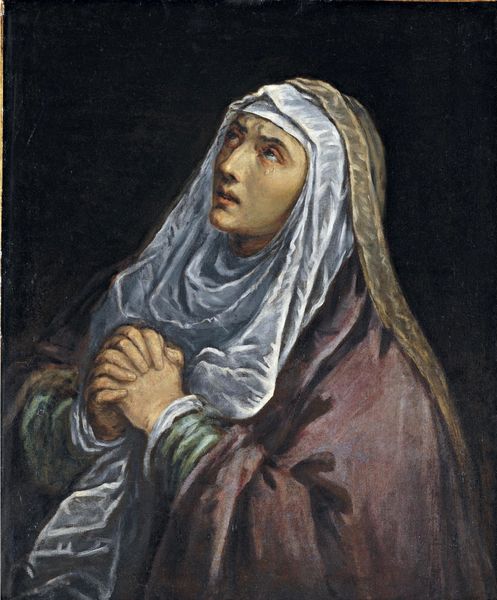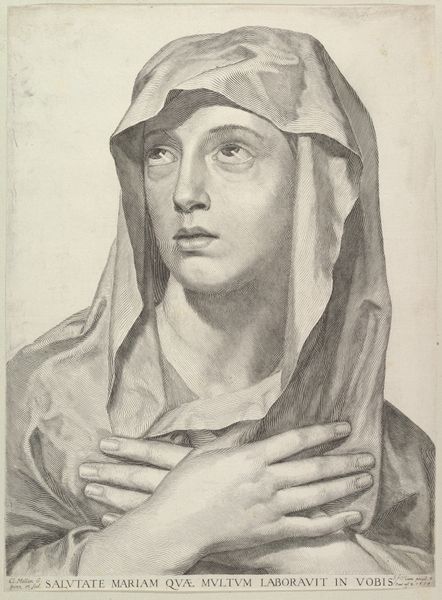
oil-paint
#
portrait
#
baroque
#
portrait
#
oil-paint
#
christianity
#
history-painting
#
virgin-mary
Dimensions: 64 x 77 cm
Copyright: Public domain
Editor: This is Jusepe de Ribera’s "Mater Dolorosa," painted in 1638, and rendered in oil. There is such a stillness and intimacy despite the heavy subject matter. What strikes you most when you look at it? Curator: The tenebrism is arresting, wouldn't you agree? See how the figure emerges from almost complete darkness, achieved by Ribera's stark juxtaposition of light and shadow. Observe also the artist's technique, visible in the rough, textured brushstrokes. It gives the work an undeniable physicality. Editor: It almost feels tactile, the way you describe it. Are there other visual components at play? Curator: Absolutely. Consider the composition itself. The Virgin Mary is positioned off-center, her gaze directed towards the left, leading the viewer’s eye in that direction, even though we see nothing there. This asymmetry creates a sense of unease and anticipation. Her clasped hands draw your eyes toward the very center of the canvas; the brightest section, which emphasizes an almost unbearable amount of grief. The tear amplifies this of course. Do you find that the emotional impact might lessen without such meticulous application of visual construction? Editor: Yes, the construction is key to communicating the intended emotion. I was just focused on the emotion first! It is interesting to see the Baroque style applied in such an emotionally restrained yet demonstrative way. I appreciate your perspective on its visual structure, thank you! Curator: A pleasure. The power of art resides in its ability to affect us profoundly through visual design.
Comments
No comments
Be the first to comment and join the conversation on the ultimate creative platform.
